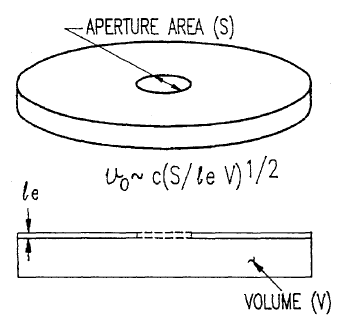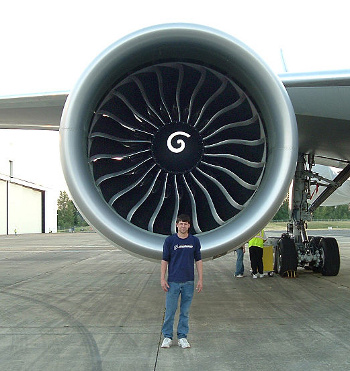Acoustic Energy Harvesting
May 5, 2011
We live in a noisy world. This is most apparent if you, or your neighbors, have young children. Have
psychologists determined why little girls scream so much? If we could harvest all that
acoustical energy, perhaps we could put it to good use. Imagine a
wireless baby monitor powered by the child's own screams.
The main problem here is the amount of energy that's actually available in
ambient noise. In a
previous article (Environmental Energy Harvesting, April 19, 2011), I referenced a report that
acoustic noise at 75 dB contains only 3 nanowatts/cm
2 of harvestable energy.[1] This
decibel level is about the sound level of a
television played at normal volume. It's a little louder than normal conversation.
If your equipment is in an environment with more noise, you can get more power. In some noise environments, you wouldn't want to be anywhere near your equipment. Here are some noise examples, as listed in
Wikipedia:
| Noise Source | dB (20 μPa ref.) |
| Hearing damage for long-term exposure | 85 dB |
| Traffic on a busy roadway at 10 meters | 80 - 90 dB |
| Jackhammer at 1 meter (approx.) | 100 dB |
| Jet engine at 100 meter | 110 - 140 dB |
| Possible hearing damage | 120 dB |
| Threshold of pain | 130 dB |
| Jet engine at 30 meters | 150 dB |
Sound pressures are given in decibels, relative to a reference pressure of 20 μ
pascal. So, how to you relate decibels to how much additional power you can obtain from increased sound level? The definition of a decibel (dB) in power calculations is
dB = 10 log10(P/Pref)
where P is the power and P
ref is the reference power. Acoustic scientists have set P
ref to a very low level, so the dB numbers encountered are positive, as in the above table.
Audio and
radio frequency engineers, however, have set it to a middle level of one
milliwatt, so their dB values are most frequently negative.
What this equation means is that, independent of whatever reference level is chosen, a 10 dB increase corresponds to ten times more power. The early example, that 3 nanowatts/cm
2 of harvestable energy can be obtained at 75 dB, means that an increase in sound level to 105 dB (all other things being equal) gives you 3 microwatts/cm
2. A jump to 135 dB brings you into the milliwatt/cm
2 range.
A large part of the acoustic energy harvesting problem involves coupling the acoustic energy into your
transducer. Resonant systems are always the most effective, and if your transducer has a resonance, it can be placed in a device called a
Helmholtz resonator. This device, named after the famous physicist,
Hermann von Helmholtz, allows harvesting more energy at that resonant
frequency. The figure below shows the structure of a practical Helmholtz
cylindrical resonator.

Helmholtz resonator.
Figure 3A of
US Patent No. 5,565,847 (simplified).[2])
In this figure, ν
0 is the resonant frequency in
Hz, S is the area of the
aperture, l
e is the thickness of the aperture, C is the
sound velocity, and V is the cylinder volume. The equation does not give precise values for all cylinders, but it's a good starting point.
Helmholtz resonators have been used by
Mark Sheplak, a Professor of
Mechanical and Aerospace Engineering at the
University of Florida, and his research team.[3-5] The Florida team demonstrated the possibility of acoustic energy harvesting of several tens of milliwatts at a sound pressure level of 160 dB.
Where would you find such an extreme sound level? The intended application is an
active noise reduction system for
turbine engines in aircraft. The active systems would replace the present passive systems that aren't very effective over the wide spectrum of engine operating modes from takeoff, cruising and landing.

Now, that's an engine!
Engine of a Jet Airways Boeing 777-300ER.
Photo by Cory Barnes, via Wikimedia Commons.
![]()
References:
- Haluk Külah and Khalil Najaf, "Energy Scavenging From Low-Frequency Vibrations by Using Frequency Up-Conversion for Wireless Sensor Applications," IEEE Sensors Journal, vol.. 8, no. 3 (March, 2008), pp. 261-268.
- Richard J. Gambino, Alejandro G. Schrott, Robert J. von Gutfeld, "Magnetic tag using acoustic or magnetic interrogation," US Patent No. 5565847, Oct 15, 1996
- Lucas Laursen, "Acoustic Energy Harvesters Gaining Volume," IEEE Spectrum, April 26, 2011.
- S B Horowitz, M Sheplak, L N Cattafesta III and T Nishida, "A MEMS acoustic energy harvester," Journal of Micromechanics and Microengineering, vol. 16, no. 9 (September 2006), pp. S174-S181
- Fei Liu, Alex Phipps, Stephen Horowitz, Khai Ngo, Louis Cattafesta, Toshikazu Nishida and Mark Sheplak, "Acoustic energy harvesting using an electromechanical Helmholtz resonator," J. Acoust. Soc. Am., vol. 123, no. 4 (April, 2008), pp. 1983-1990.
Permanent Link to this article
Linked Keywords: Psychologist; acoustics; acoustic; acoustical; energy; wireless; baby monitor; ambient noise; acoustic noise; decibel; television; meter; jackhammer; jet engine; pascal; audio engineering; radio frequency engineering; milliwatt; transducer; resonant; Helmholtz resonator; Hermann von Helmholtz; frequency; US Patent No. 5,565,847; hertz; Hz; Mark Sheplak; Mechanical and Aerospace Engineering; University of Florida; active noise reduction system; gas turbine engine; Boeing 777-300ER; Cory Barnes; Wikimedia Commons.